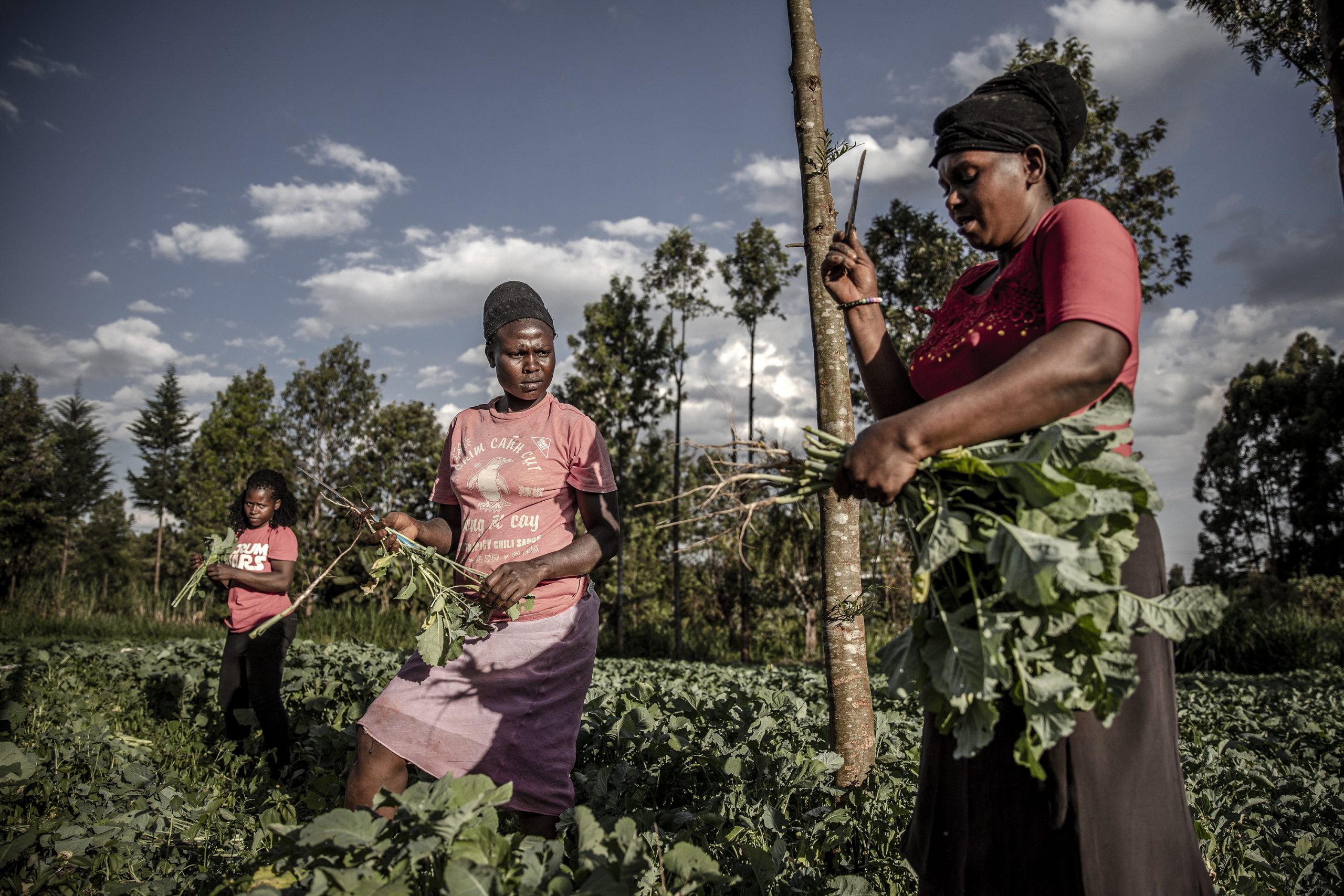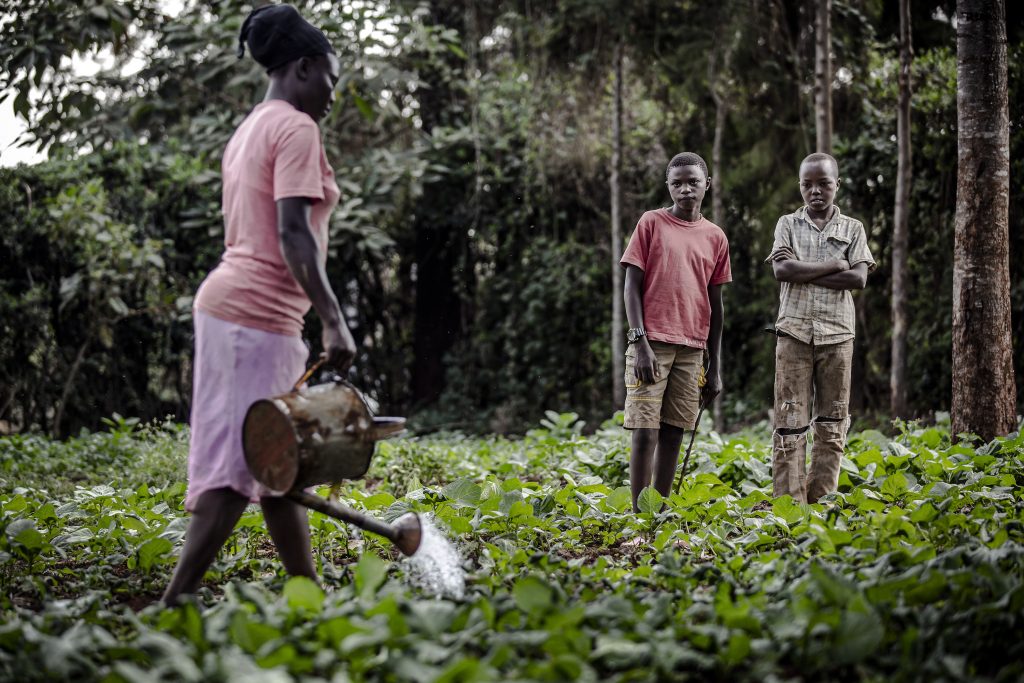
Written by Libor Stloukal and Susan Kaaria, Inclusive Rural Transformation and Gender Equity Division, Food and Agriculture Organization of the UN (FAO), Rome, Italy
In the previous blog, demographic factors that leave rural women more susceptible to socio-economic marginalisation were highlighted. In this blog, we focus on the socio-economic participation of rural women, including the “feminisation of agriculture” phenomenon and the impact of crises such as COVID19.
Feminisation of agriculture
Evidence for many developing countries indicates that women’s involvement in agriculture is increasing over time, whether as independent producers, as unremunerated family workers, or as agricultural wage workers. This shift is often referred to as the feminisation of agriculture, and sometimes it is (incorrectly) portrayed as a global trend.
In reality, national-level data sources are seriously deficient with regard to women as independent producers. In many countries, much of women’s work in rural areas is informal or unpaid, and therefore goes unrecorded. From the patchy evidence available, it can be estimated that women comprise over 37 percent of the world’s rural agricultural employment, a figure which rises to 48 percent for low-income countries (estimates based on ILO, 2020). In Sub-Saharan Africa, women make up about 46 percent of agricultural employment. In Southern Asia, although fewer women than men are engaged in employment activities in general, women still make up 30 percent of agricultural employment. In Latin America and the Caribbean, women make up 21 percent of agricultural employment. These shares are higher in some countries and vary greatly within countries.
Globally, there is evidence of only a slight feminisation of the agricultural labour force over the last 30 years, except in the Near East and North Africa regions where the trend is clearly pronounced. In other regions trends are much less clear-cut, with variations in both directions (e.g. significant masculinisation of agricultural labour in parts of South-East Asia and some countries in Latin America and the Caribbean; and feminisation in some parts of Africa, where women traditionally have engaged strongly in agriculture, but their share seems to be rising, e.g. in Botswana, Chad, and Malawi).
We can determine that rural out-migration seems a more significant phenomenon in South-East Asia and Latin America (where the diversification of the rural economy appears more advanced, at least in some regions, and where women seem to be taking on farm management responsibilities in some cases) than in South Asia or sub-Saharan Africa. Southern Africa, however, is more effected by the HIV and AIDS epidemic, which through its sex- and age-specific mortality effects on the composition of rural households, has a stronger influence on the feminisation of agriculture than in any other region.
Agricultural transformation is affecting rural areas everywhere, and each region and country in different ways, depending on local socio-economic and institutional structures. For example, the increased demand for female labour in the agricultural wage labour market as a result of expanding non-traditional agricultural exports is affecting Latin America the most, and to a lesser extent India and some countries in Sub-Saharan Africa, such as Kenya, Rwanda and Uganda.
Socio-economic participation of rural women
Evidently, the forms and conditions under which women participate in agriculture matter for demographic reproduction, gender equality and economic development – as does whether an increase in the percentage of women in the agricultural labour force relative to men is because more women are economically active or because fewer men are working in agriculture.
However, in many settings rural women’s social and economic participation is severely hindered by deeply rooted discriminations which affect their access to resources and assets such as land, technology, education, information, services, rural organisations, employment opportunities outside the family farm, and legal rights.
Women are significantly disadvantaged relative to men with regard to their land rights. This is true for all dimensions of land rights associated with agricultural land: ownership, management, transfer and economic rights. According to FAO’s Gender and Land Rights Database (http://www.fao.org/gender-landrights-database/en/), less than 15 percent of all landholders in the world are women. The distribution of women landholders ranges from 5 percent in Middle East and North Africa to 18 percent in Latin America and the Caribbean. The proportion of women out of all landowners ranges from less than 20 percent in Honduras to slightly over 50 percent in Malawi. Furthermore, women reported owners are less likely than men to have a legal document proving ownership of their plots or to have their names on the land ownership document. Women’s limited land rights effect all dimensions of land use: ownership, management, transfer and economic rights. Existing studies suggest that the gender gap in land ownership is substantial in many countries. In Nigeria, 3.9 percent of women own land, compared with 23.3 percent of men (FAO, 2020).

One restricting factor is a lower education level by women compared to their male counterparts. This is partly due to discriminatory access as children and partly due to higher school drop-out rates, driven by factors such as early marriage or pregnancy, but also unsafe school environments and girl’s engagement in unpaid or paid labour.
Similarly, rural women’s access to improved technologies, agricultural inputs, credit and other productive resources, as well as to decision-making, is generally much more limited than men’s. In some rural settings, it continues to occur mainly through the mediation of men, especially husbands or fathers. The multiple biases against women’s access to services, information, financing, technology, and decision-making make it more difficult for them to produce and market as much as men with similar assets. The impacts of climate change further aggravate the situation for rural women, who tend to be generally more dependent on natural resources than men, but their disadvantaged socio-economic status undermines their access to climate-smart technologies and services.
Rural women and COVID-19
Rural women are particularly vulnerable to shocks affecting the agricultural sector, including rising food prices, climate change and socio-economic crises. In this regard, evidence on the gendered impacts of the COVID-19 pandemic is especially revealing. From the limited information that exists, we can conclude that the pandemic has significantly reduced the economic opportunities for rural women.
In Africa, women constitute nearly 46 percent of agricultural workforce and own 1/3 of small and medium enterprises (SMEs). COVID-19 restrictions have undermined women’s ability to access resources for productive activities, find finance to keep their SMEs afloat, and earn incomes in rural markets (CARE, 2020a).
The pandemic has also worsened women’s and girls’ access to nutritious and safe food. According to research conducted by CARE across 40 countries, 41 percent of women and 30 percent of men reported lack of food was a key impact that COVID-19 had on their lives (CARE, 2020b).
Due to COVID-19, women’s unpaid care work and the unequal division of labour within households both increase, as response measures close schools, public spaces and care services (CARE 2020a). Gender-based violence has also increased during the COVID-19 crisis as lockdowns and self-isolation measures increase stress and economic hardship. In Tunisia, initial information indicates an average increase in the incidence of gender-based violence of 50-60 percent, rising up to 400 percent, based on survivors’ calls for help to women’s organisations hotlines (UN Women, 2020).
Therefore, there is urgent need to prioritise women’s access to social protection programs and humanitarian aid. Programs also need to ensure that women (including married women) are able to access aid independently, and that they participate equally with men in COVID-19 response committees and task forces (CARE, 2020b).
Conclusion
The current global demographic and socio-economic picture is one of considerable diversity and ongoing change. The continuation and consequences of demographic trends present unique opportunities as well as challenges for all societies. Understanding a country’s demographic situation should help in prioritising policy responses.
Empowering rural women economically and socially emerges as a clear priority regardless of the country’s demographic scenario, but especially so for the LDCs. Empirical evidence strongly indicates that lasting improvements in household food security in less developed countries can only be achieved through the expansion of women’s access to productive resources, decent employment and education, and their enhanced role in decision-making at all levels.
Improving gender equality in rural areas is one of the most powerful instruments to fight rural poverty and hunger, improve human capital for future generations, and foster inclusive economic growth. The specific nature of gender equitable interventions should reflect the different demographic realities as well as the diverse development needs of countries.
References
CARE, 2020. COVID-19 Rapid Gender Assessments. http://www.careevaluations.org/keywords/covid-19-rga/
CARE, 2020b. She Told Us So. Rapid Gender Analysis: Filling the Data Gap to Build Back Equal. https://insights.careinternational.org.uk/media/k2/attachments/CARE_RGA_SheToldUsSo_Sept-2020.pdf
Committee for the Coordination of Statistical Activities, 2020. How COVID-19 is changing the world: a statistical perspective. https://unstats.un.org/unsd/ccsa/documents/covid19-report-ccsa.pdf
FAO, 2019. RuLIS – Rural Livelihoods Information System [online].
FAO. 2020. Gender and Land Rights Database [online].
FAO, forthcoming. Data Snapshot: Using sex-disaggregated data to better understand gender gaps in agriculture.
Global Strategy for Improving Agricultural and Rural Statistics (GSARS), 2017. Field Test Report: Intra-household decision-making in agriculture. http://gsars.org/wp-content/uploads/2017/05/WP-02.05.2017-Field-Test-Report-.pdf
ILO, 2018. Women and men in the informal economy: A statistical picture. https://www.ilo.org/wcmsp5/groups/public/—dgreports/—dcomm/documents/publication/wcms_626831.pdf
ILO, 2020. World Employment and Social Outlook. http://ilo.org/wesodata
Slavchevska, V., Kaaria, S. and Taivalmaa, S. 2016. Feminization of Agriculture in the Context of Rural Transformations: What is the Evidence? https://openknowledge.worldbank.org/handle/10986/11866
Komatsu, H., Malapit, J. L. H. and Theis, S. 2015. How does women’s time in reproductive work and agriculture affect maternal and child nutrition? Evidence from Bangladesh, Cambodia, Ghana, Mozambique, and Nepal. IFPRI Discussion Paper 01486.
UN DESA, 2019. World Population Prospects 2019.
UN ESCWA and UN Women, 2020. The Impact of COVID-19 on Gender Equality in the Arab Region. https://www.unescwa.org/sites/www.unescwa.org/files/20-00131_gpid_pb_eng_apr5.pdf
UN Women, 2020. Press release: Gender-responsive measures to combat COVID-19 urgently needed to preserve and advance Tunisia’s progress on human rights, warns UN Women. http://gsars.org/wp-content/uploads/2017/05/WP-02.05.2017-Field-Test-Report-.pdfer equitable interfor-gender-responsive-measures-to-combat-covid-19
Feature photo: Members of FAO trained group of youth Blessed Achievers Group harvest indigenous vegetables at a farm in Kiambu, Kiambu County, Kenya on October 5, 2020. Credit: ©FAO/Luis Tato.
No commercial use, advertising, marketing, storage or third-party distribution of FAO photographs is allowed. Photographs may not be modified without prior permission.
